Flights to Croatia: Enter Air from Poland to Split, Transavia from Nantes to Dubrovnik
December 4, 2019 - The latest news from around Croatia’s airports for new flights to Croatia with updates from Split, Dubrovnik, and Rijeka.
Avio Radar announced that Polish carrier Enter Air would fly for TUI from Poland to Split. Two lines are planned in the 2020 summer flight schedule, from Katowice and Warsaw to Split. Both routes will operate once a week, on Thursdays, from June 4 to September 24, 2020, with a Boeing 737-800 aircraft.
Recall, Ryanair Sun flew for TUI from Warsaw to Split this year. Enter Air is thus taking over this line and is introducing a new line form Katowice to Split. Both Wizz Air and Czech Smartwings already fly on both routes. In addition, the Polish carrier LOT already flies from Warsaw to Split. A total of four carriers are now competing on lines from Poland to Split with a total of 12 flights per week.
Furthermore, Avio Radar reports that Transavia France, a French subsidiary of the Dutch low-cost carrier Transavia, has announced a new flight from France to Dubrovnik in their 2020 summer flight schedule. The new Nantes-Dubrovnik route will operate twice a week, on Wednesdays and Saturdays, from April 11 to October 24, 2020. A Boeing 737-800 aircraft will serve this line.
Transavia will be the third carrier to connect Nantes and Dubrovnik. Namely, the Spanish carrier Volotea and the British Easyjet both fly three times a week on this route. Accordingly, three airlines will offer eight flights on the Nantes-Dubrovnik line next summer.
Finally, Ex Yu Aviation News reports that Rijeka Airport handled its 200,000th passenger on November 28, 2019, marking its busiest year yet. The 200,000th traveler was on the Croatia Airlines flight from Munich to Rijeka.
With a record year behind them, Rijeka Airport has no plans to slow down next year. Namely, in 2020, Ryanair will launch a service from Hahn and LOT from Warsaw.
“This significant passenger growth was achieved thanks in part to the activities, dedication and financial assistance provided by the management of Rijeka Airport in cooperation with the Primorje-Gorski Kotar County, the Ministry for Sea, Transport and Infrastructure, the Croatian National Tourist Board and the Kvarner County Tourism Office, which supported the introduction of new routes in 2019,” the airport said.
Dubrovnik Airport also had a record month of November when they handled 56,924 passengers for an increase of 113.9% compared to last year.
To read more about travel in Croatia, follow TCN's dedicated page.
As Dubrovnik Sells Its Soul, Trogir Artisans Highlight Authentic Traditions
November 30, 2019 - Trogir artisans have been at the centre of the town's life for thousands of years. Unlike Dubrovnik, the modern Trogir artisans are upholding the authentic traditions of the past.
The most thought-provoking presentation of 2019 for me so far was called Successful Tourism by tourism guru Doug Lansky at the Crikvenica International Health Tourism conference earlier this month. One of the most acclaimed speakers on the global circuit, Lansky gave a brilliant presentation of what does, and what doesn't work. HIs simple message for what people are looking for was something unique, different experiences. You can read the full report on Lansky's presentation here, but one of his simple observations was the following:
But it is the truly unique attractions which make us travel. And the very ironic thing is that those very unique things are VERY affordable and cost almost nothing. Imagine going to Paris without visiting two of its stars, the Eiffel Tower and the Louvre - combined entrance price just 20 euro. The Taj Mahal (1 euro), the Pyramids (6 euro) the Great Wall of China (7 euro), the Hermitage in St Petersburg (8 euro), the Statue of Liberty (17 euro), Edinburgh Castle (20 euro), Macchu Picchu (39 euro). Lanksy took us through 15 world-class and very unique attractions, of which Petra in Jordan was the most expensive at 60 euro - total entrance price just 290 euro all in. In his example, a tourist coming from Vancouver to Paris to see the Louvre was spending just 0.3% of the holiday budget on the thing he came to see.
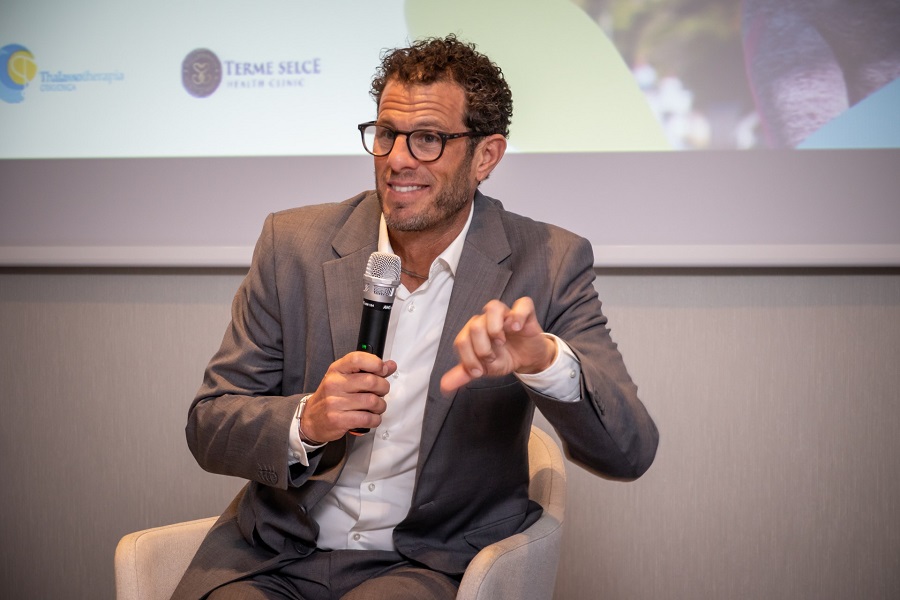
Unique experiences. It is something I have been thinking a lot about ever since. Croatia has an abundance of unique and fascinating experiences, but they are either completely overrun by tourism (Dubrovnik, Diocletian's Palace, Plitvice Lake and the Blue Cave), or almost completely ignored by tourists visiting Croatia (incredible Vucedol, the birthplace of Telsa in Smiljan, or - for religious tourists - the only authenticated Croatian miracle in Ludbreg).
I had another incredible authentic experience last week in Dalmatia, a 6am walk around a spectacular UNESCO World Heritage Site that I had all to myself in bright sunshine. Thousands of years of history in the stone streets and squares of Trogir, it was magical, and I encourage you to take the effort, particularly out of season, when most of the cafe awnings have been put away, thereby exposing more of the original stone.
I was in Trogir for the launch of the new branding of the town, Trogir, Marked by Masters, a fantastic project with so many layers of genius that I am still trying to unravel them before writing a big report on it. While I knew that Trogir had a rich artisan history, I had no idea that the traditions of the past were so alive in Trogir today, or that all the actors in the promotional video above were in fact masters in their own field. The new branding of Trogir, Marked by Masters was not only a throwback to past history, but very much a link to the vibrant creative scene in the old town today.

Unlike Dubrovnik.
If we were to make a list of must-see places according to Lansky's presentation, the old town of Dubrovnik would surely be number one on the list. It is even free to visit (or about 25 euro from memory to visit the famous walls). Just the kind of attraction that Lansky would be drooling over. An attraction which gets people on the plane with most of the money generated around it. A destination filled with fine stone buildings and cute arts and crafts from family businesses dating back generations. Unique and different experiences.
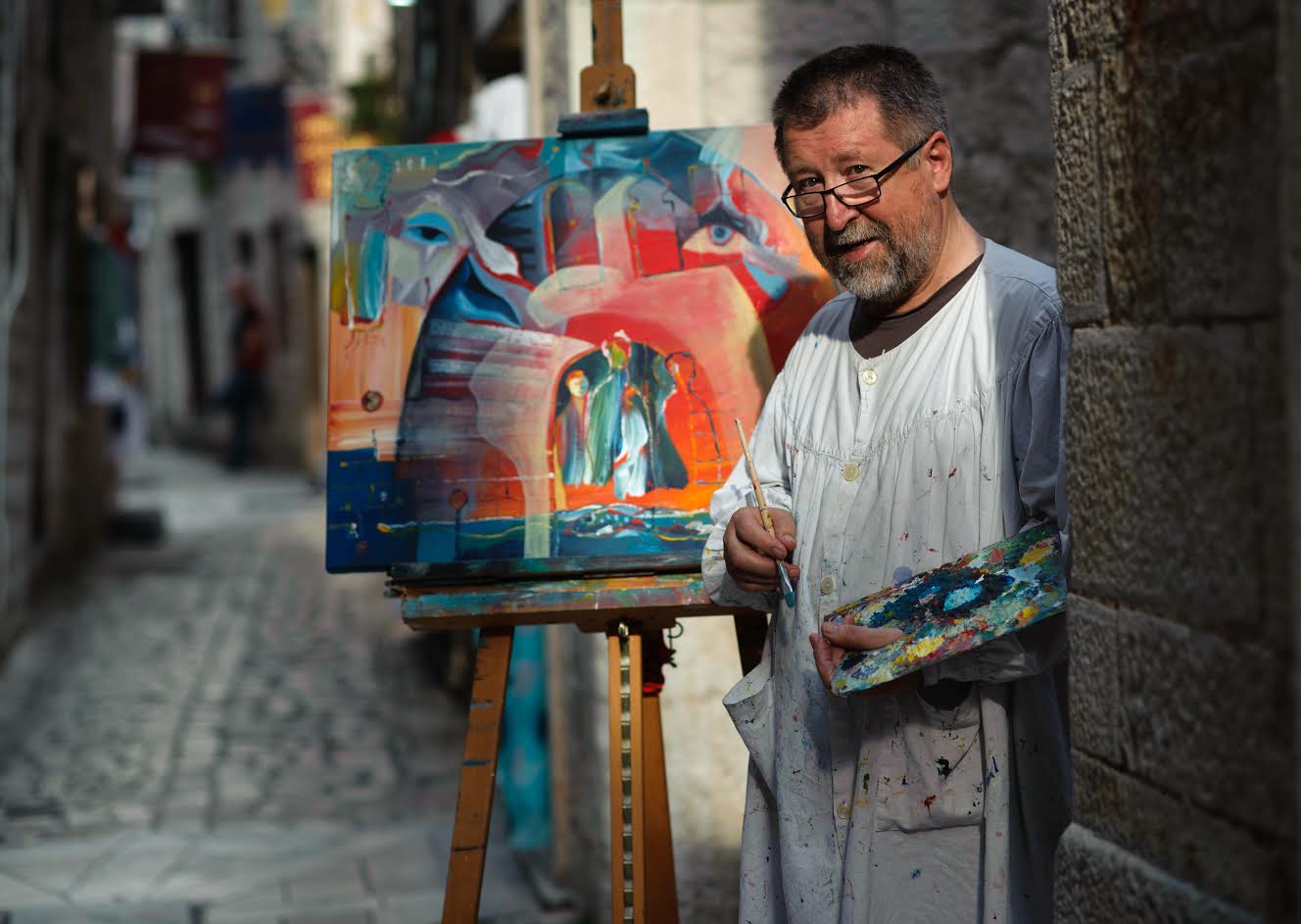
Except things have not quite worked out that way in Dubrovnik.
The curse of overtourism and the obsessions with numbers, numbers, numbers is such that one of Croatia's leading boutique travel agencies told me they are considering removing Dubrovnik entirely from their 2020 offer.
How crazy is that?
But if you stop to take a closer look, the reasons are plain to see. Several years ago I went to visit the legendary barber in the old town who had run his barbershop for about 50 years from memory.
He was the last such business left in Dubrovnik. All the other artisans had stopped their trade or moved out of the old town, to be replaced by tacky souvenir shops selling cheap Chinese crap and Game of Thrones souvenirs.
And the majority of visitors on their day trips were not even spending. I was shocked when a specialist souvenir shop, which has successful stores in other coastal locations, told me they were closing their Dubrovnik shop as business was so bad, especially in July and August when sales were worse than May and October. So many people in the town that those who wanted to explore at leisure and spend were going elsewhere.
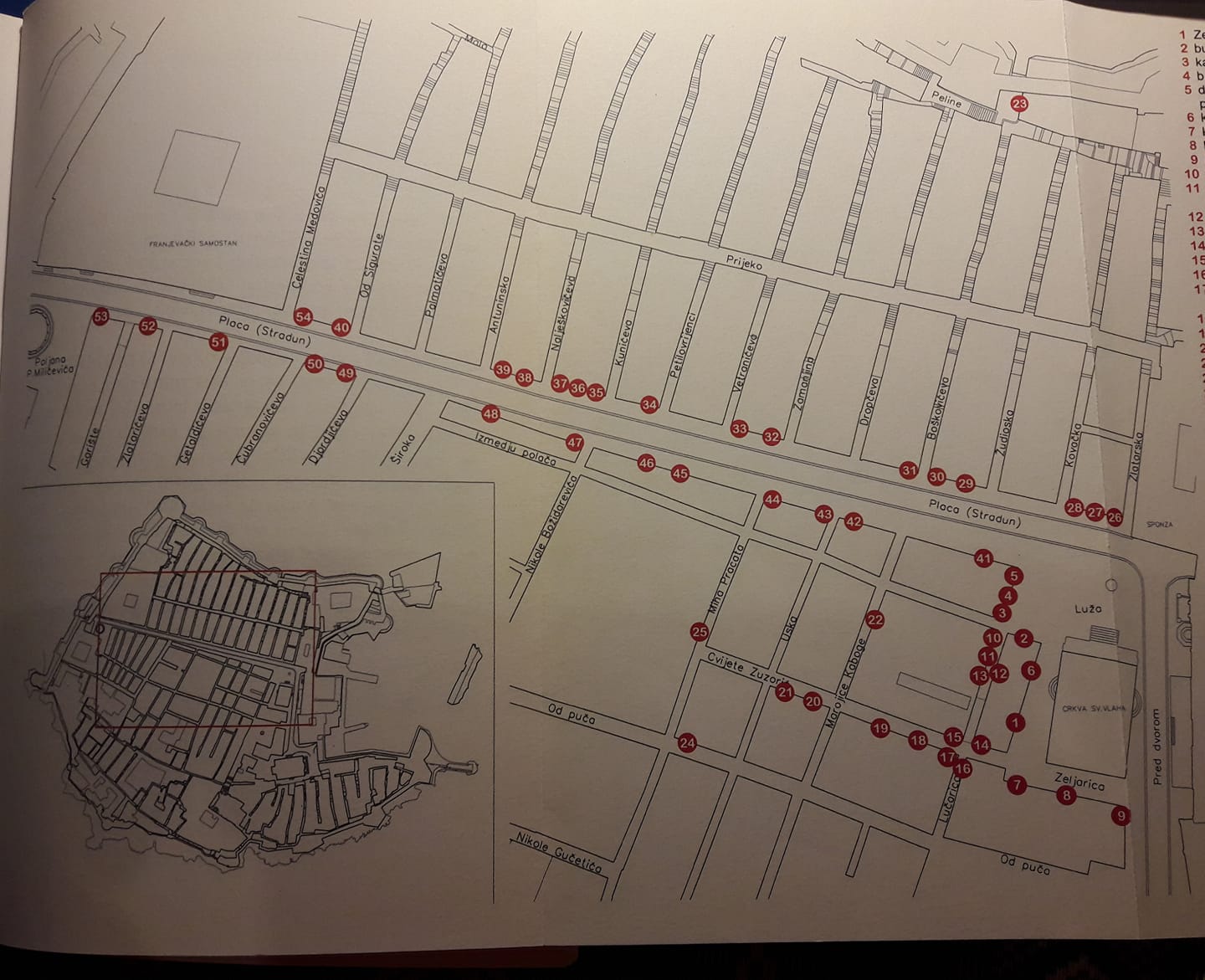
I decided to look into the Dubrovnik artisan scene over the years. Many thanks to Miso Mihocevic and Miljenka Tarana for their local Dubrovnik expertise. Check out this 1929 map of the old town of Dubrovnik and its artisans. The map is from a 1929 edition of a book by Nada Scatolini.
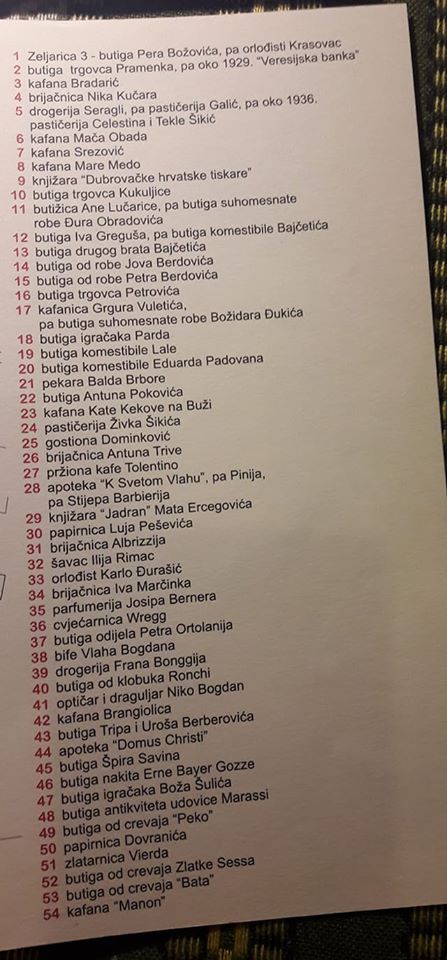
A list of all the arts and crafts shops which made the list.
I asked Miso how things were in the more recent past, 1991 for example, the year of the outbreak of the war:
By 1991 there were 7 barber shops, now only one, 3 tailors, now zero, one hat shop (was old tradition and excellent) closed several years back; 5 joiners, long since gone. 3 shoe repair shops, zero now. ( in my time there was an interesting little shop that repaired umbrellas, time ran it over ..) Some craft shops have become souvenir shops and are hardly traceable even in the memory of my friends.
Apart from the solitary barbershop, nothing else remains in Dubrovnik today.
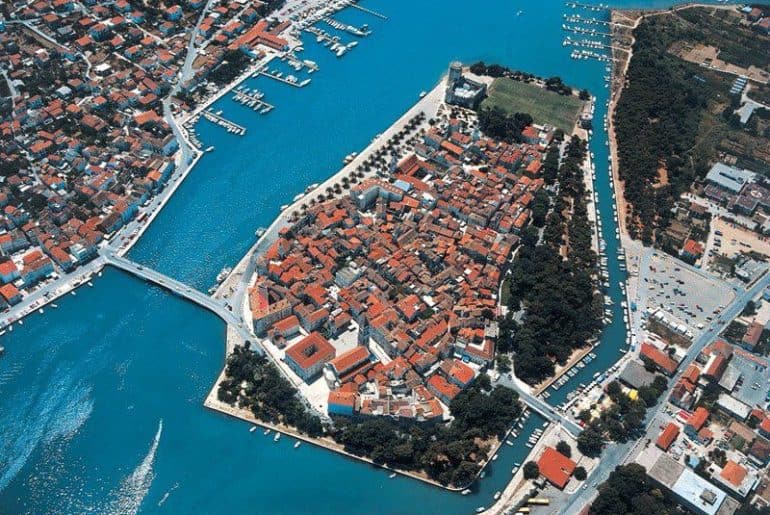
Which is why Trogir was SO refreshing. Although smaller than Dubrovnik, Trogir is also a UNESCO World Heritage Site with a formidable heritage dating back thousands of years. But the big difference between Dubrovnik and Trogir is that so many of those old arts and crafts are very much on display today and practiced by the youngest generation of the family business.
Sculptors, coral jewellers, goldsmiths, tailors, shoemakers and a clock repairman - they can all be found in the old town of Trogir, practicing their family trade as generations of their family did before them.
In an era of overtourism and making the quick buck, this new direction of Trogir is one of the most interesting positive tourism developments I have come across recently, certainly on the coast.
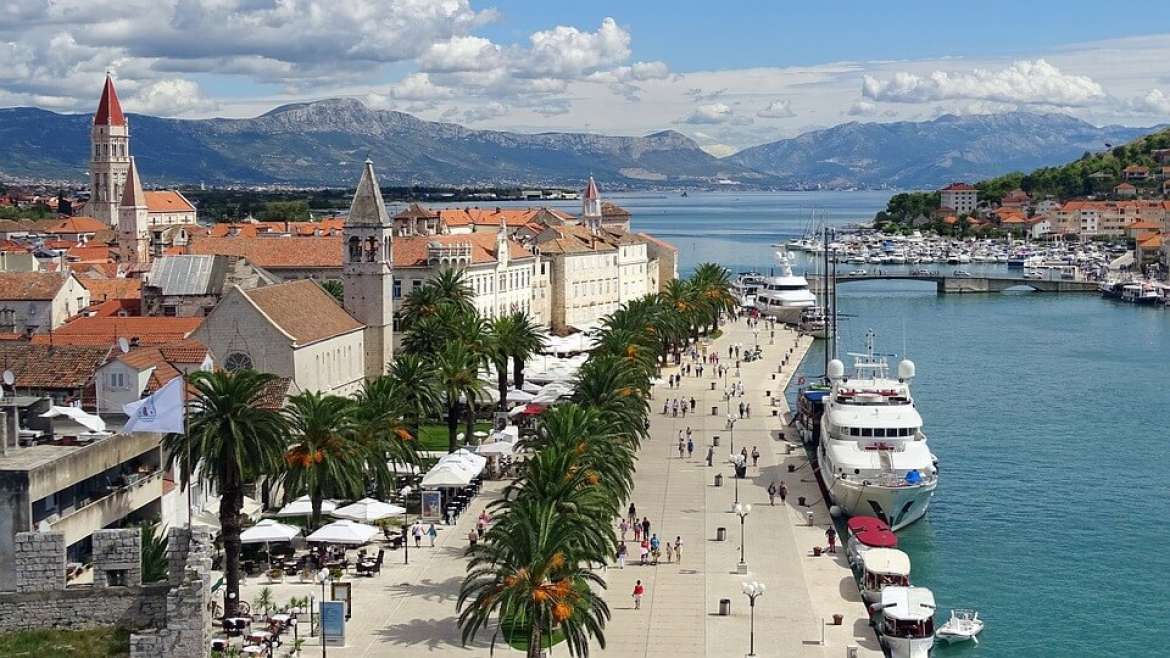
I encourage you to visit. But make sure that your day starts with a 6am walk around this magnificent World Heritage Site out of season, when you will experience Dalmatia at its very finest, and all to yourself. Then enjoy a morning coffee on the waterfront of one of the squares, before starting your tour of the Trogir artisans.
To follow the latest from Trogir, check out the dedicated TCN section, or learn more about the town in the Total Croatia Trogir in a Page guide.
Flights to Croatia: LOT Connecting Budapest and Dubrovnik, Air Serbia Stops Rijeka Service for Winter
November 28, 2019 - The latest news from around Croatia’s airports for new flights to Croatia with updates from Dubrovnik, Rijeka, and Zadar.
Ex Yu Aviation announced that LOT Polish Airlines would launch a seasonal service between Budapest and Dubrovnik next year. The new route will operate from June 7 and run once a week, on Sundays, until September 27.
This will be the third city LOT services to Dubrovnik, in addition to Warsaw and Krakow.You can find more details about the new Budapest - Dubrovnik route here.
Avio Radar reported that Irish low-cost carrier Ryanair will boost the Cologne/Bonn-Zadar route for next summer. The line only started operating this year with two flights per week. Next summer, Ryanair will run three flights a week, and in addition to Wednesdays and Sundays, they will service Zadar on Mondays from the beginning of June to the end of September 2020. A Boeing 737-800 aircraft flies on all Ryanair lines.
Avio Radar also reported that Serbia’s national air carrier Air Serbia would suspend traffic between Belgrade and Rijeka during the winter. The last flight is scheduled for December 5, 2019. A few more flights around the New Year remain on offer. The line will then continue to operate on a regular basis from May 1, 2020, according to the summer flight schedule, which runs twice a week on Tuesdays and Fridays. Compared to this year, Air Serbia will begin operations to Rijeka one month earlier than in 2019. An ATR-72 runs on this line.
To end this week of flight news, Dalmacija Danas reported that the Split Architectural Bureau of Ante Kuzmanić is the winner of a competition for the conceptual architectural and urban design of the Zadar Airport passenger terminal. A group of Split architects designed the extension and renovation of the existing terminal building and parking lot. They received a prize of 250,000 kuna for the project. The competition was conducted by the Society of Zadar Architects.
The projects were evaluated by a jury chaired by academician Nikola Bašić, who said that if the conceptual design is transformed into a design project, Zadar Airport will be the most modern airport in Croatia, as it combines all the new parameters that make such an object comfortable and safe.
To read more about travel in Croatia, follow TCN’s dedicated page.
Dubrovnik Begins Second Phase of Sustainability Measurement Project
November 28, 2019 - The City of Dubrovnik has actively begun the second phase of the Destination Sustainability Measurement Project, which is being implemented by the Global Council for Sustainable Tourism (GSTC) for the city government.
HRTurizam writes that this body is implementing the report based on the criteria for sustainable tourism and destination management established by the United Nations and it is estimated to be completed in January 2020. In addition to the plan for managing the protected city of Dubrovnik, which is also under construction, it is a crucial document that will define the current degree of sustainability and which will define further steps in managing the destination to achieve sustainable tourism.
Yesterday in Lazareti, an initial meeting of GSTC council member and Mediterranean director Ioannis Pappas met with Dubrovnik Mayor Mato Frankovic, his associates and a wide range of stakeholders in Dubrovnik tourism: city councilors, utility companies directors, representatives of travel agencies, police, associations and organizations related to tourism and others.
Mayor Frankovic gave the opening address and emphasized the importance of tourism sustainability in the context of the city's ‘Let's Respect the City’ project that the city administration has been implementing since 2017. As a critical element of the city and Dubrovnik tourism management, he emphasized cooperation with the Dubrovnik Port Authority by regulating the number of cruisers and at the same time, managing the number of day-trips to the old city center by using online vouchers for buses and informing stationary guests with smart city tools. In addition to presenting the existing measures, he announced future moves that would be introduced gradually, to make Dubrovnik an even better place to live and, consequently, for tourists.
Pappas presented the methodology of measuring sustainability, emphasizing that active cooperation of all actors involved in Dubrovnik tourism is of paramount importance for this phase. Numerous workshops, focus groups and one-on-one interviews are scheduled over the next seven days, and Pappas invited anyone interested to submit their comments, ideas, suggestions, and ask questions, discuss issues and opportunities. Based on these consultations and policy analysis, GSTC will evaluate the current performance of the destination using the prescribed criteria and indicators.
Upon the completion of the analysis, an evaluation of the activities to date will be presented to the Dubrovnik public and the city government will receive concrete, practical guidance for improving results in the most essential areas of destination sustainability: destination management, benefits to the local economy, life and cultural wellbeing, and protection of nature and natural resources. The sponsor of the project is the Cruise Lines International Association (CLIA), a partner of the City of Dubrovnik and a signatory to the Cooperation Agreement for the Preservation and Protection of the Cultural Heritage of Dubrovnik. The City of Dubrovnik is one of the 30 world destinations for which GSTC will conduct a Destination Assessment and the only destination measured by CLIA.
To read more about lifestyle in Croatia, follow TCN’s dedicated page.
Flights to Croatia: Volotea Regularly Connecting Mykonos to Croatia for First Time
November 25, 2019 - The latest news from around Croatia’s airports for new flights to Croatia with updates from Zagreb, Split, Dubrovnik, Pula, and Zadar.
Avio Radar reports that Spanish low-cost carrier Volotea has announced a new route in their 2020 flight schedule that will connect the Greek island of Mykonos to Dubrovnik. The new Mykonos-Dubrovnik route will run twice a week, on Wednesdays and Saturdays, from May 30, 2020. A Boeing 717-200 should service this line.
Thus, for the first time in history, Mykonos will be connected regularly to a Croatian destination. Mykonos is only the second destination in Greece to operate a regular line to Croatia.
Avio Radar also announced that LOT Polish Airlines, a member of the Star Alliance airline association, has begun selling tickets on the Warsaw-Rijeka route. Unlike prior announcements, the new Warsaw-Rijeka line will run for a shorter period of time, i.e., from June 7 to September 27, 2020. LOT will operate one flight per week, on Sundays. The Embraer ERJ-195 aircraft was announced for this route.
Other LOT Polish Airlines routes to Croatia (from Warsaw to Dubrovnik, Split, Zadar, and Zagreb) are on sale the same as this year. However, the Warsaw-Pula line is no longer on offer for next year. Additionally, this year’s new Krakow-Dubrovnik line has been canceled.
To wrap up this edition of flight news, HRTurizam writes that Croatian tourism workers will undoubtedly agree that the key even more success in Croatian tourism, whether we are talking about extending the season or increasing the average earnings from tourism, is an adequate investment in the development of tourism infrastructure, content and, offers, to optimize the "value for money" relationship, which, according to all research, is crucial when choosing a destination.
To this end, the Croatian National Tourist Board's Market Research and Strategic Planning Department has prepared an overview of direct flights and direct air connections of Croatian airports with 20 significant markets according to information obtained from Dubrovnik, Split, Zagreb, Zadar, Osijek, Pula, Mali Losinj, Brac and Rijeka.
You can see the document here.
To read more about travel in Croatia, follow TCN’s dedicated page.
What's Open in Dubrovnik this Winter? Tourist Board Announces Restaurant Promotion
November 23, 2019 - The Dubrovnik Tourist Board is working to keep the city alive this winter with new promotional activities for restaurants.
HRTurizam writes that given the increasing number of international and domestic flights during the winter months and the interest and growth in visitors, the Dubrovnik Tourist Board is preparing promotional activities and printing a monthly "Winter restaurants" leaflet this winter, containing a list of open restaurants, pizzerias, and fast food spots during the month of December. The brochure will include special working hours, to ensure that guests staying in Dubrovnik are as informed as possible and that outdoor restaurants are better promoted during the offseason.
During the 2019/2020 winter season, Dubrovnik will be connected to seven international destinations: Croatia Airlines-Frankfurt, British Airways-London, Vueling-Rome and Barcelona, LOT-Warsaw, Aegean Airlines-Athens, and Turkish Airlines-Istanbul.
Aiming for better cooperation with restaurants and better available information, the Dubrovnik Tourist Board has invited all owners of restaurants, pizzerias and fast food to email them by Tuesday, 26 November by 3:00 pm, with their opening dates and opening hours during December, especially on Christmas Day, Christmas, New Year’s Eve and New Year’s Day. They should also include their contact by phone, web, or Facebook page and if they have any special offers available.
This year, the City of Dubrovnik decided to reduce the public area for restaurant tables and chairs by 10% for all facilities that use 25,00 m2 or more. Furthermore, the lease term of public areas has increased to 5 years, which will undoubtedly bring some security to catering businesses.
Also, in an effort to prolong the tourist season, the City of Dubrovnik has proposed a measure that should encourage owners of restaurants in the historic core to work in the winter months.
In accordance with the new amendments to the Decision on the lease of public spaces in Article 6, a new paragraph on the rent exemption for caterers in the Old Town has been added if caterers operate in the winter months.
The measure refers to rent exemption for public areas of caterers predominantly serving meals (restaurants, taverns, pizzerias) in the historic core, if they carry on their business from December 1, 2019, to February 29, 2020.
To read more about travel in Croatia, follow TCN’s dedicated page.
Flights to Croatia: Eurowings Discontinues Two Routes from Germany to Zagreb
November 14, 2019 - The latest news from around Croatia’s airports for new flights to Croatia with updates from Zagreb, Split, Dubrovnik, and Zadar.
Ex Yu Aviation reports that low-cost carrier Eurowings will discontinue services from Berlin and Dusseldorf to Zagreb at the end of March next year, namely on March 28, 2020. In the past, Eurowings has complained about Zagreb Airport's significantly high airport fees, which is tough for low-cost carriers. With no competition on these two routes, Zagreb will no longer be linked to the German capital.
However, operations from Cologne and Stuttgart and their seasonal summer service to Hamburg will continue as usual. Next summer, Eurowings will operate six weekly flights from Cologne to Zagreb, five weekly flights from Stuttgart to Zagreb, and eight from Hamburg, with flights running once a week between July 8 and August 26.
Eurowings is currently the only low-cost carrier operating year-round flights to Zagreb.
Avio Radar reports that Greek national carrier Aegean Airlines, a Star Alliance member, announced larger planes for all flights to Croatia in their 2020 flight schedule. Flights will no longer run on the Bombardier Q400 aircraft of the Greek regional carrier Olympic Air, but instead be operated by the Airbus A319 and A320 aircraft.
The Athens-Dubrovnik route remains in operation with five flights per week using an Airbus A320 on all flights. The Athens-Split route will operate four times a week on the Airbus A319 instead of this year’s five flights per week on the smaller Bombardier Q400. Flights will no longer run on Sundays and remain on Mondays, Tuesdays, Thursdays and Fridays. The Athens-Zagreb route will operate three times a week on Wednesdays and Sundays with the Airbus A319 aircraft, while it will use the larger Airbus A320 on Mondays. This year, Aegean operated four flights per week to Zagreb with the smaller Bombardier Q400. This route will no longer work on Thursdays.
Avio Radar also reports that Irish low-cost carrier Ryanair will introduce a new flight from Poland to Zadar in the summer. It will connect Zadar with the town of Gdansk in northern Poland three times a week, on Tuesdays, Thursdays, and Saturdays from March 31, 2020.
Ryanair started operating flights between Poland and Zadar only this year when the Krakow-Zadar and Poznan-Zadar routes were introduced twice a week, which will continue in 2020. The new Gdansk-Zadar line will be the third from Poland to Zadar. The Boeing 737-800 aircraft of the Polish company Buzz will fly on all three lines.
Buzz started operating in 2017. Ryanair founded this company in Poland under the name Ryanair Sun and initially flew only charter flights from Poland. It has now taken over most of Ryanair’s regular lines from Poland and Hungary. It already has 24 Boeing 737-800 aircraft in its fleet.
To read more about travel in Croatia, follow TCN’s dedicated page.
Lessons for Croatia: Successful Tourism by Doug Lansky at CIHT 2019
Successful tourism in an age of overtourism. Leading travel guru Doug Lansky put on a very thought-provoking show at the recent Crikvenica International Health Tourism (CIHT 2019) conference in Selce last week. With plenty of lessons for Croatia (and others) to learn.
From the very first minute after taking the stage of CIHT 2019, Doug Lansky had me hooked. One of the leading (and most engaging) speakers on the global circuit (you can check out one of his TED talks below), author of books for both Lonely Planet and Rough Guides, along with a host of other stellar tourism credentials, it became clear early on from his pouring cold water on Kvarner Regions's inclusion in Lonely Planet's top 10 regions to visit in 2020, that this was going to be quite an education.

"Yes, it is nice to have, but people don't visit destinations because of lists. I know how those lists are compiled. I used to compile them back in the office for various publications. What makes people get on a plane is something altogether different."
Before we got to what made people travel, we were treated to a very detailed and entertaining explanation of what did not make people travel. Logos, slogans, websites, sponsored social media posting, lists. And food.
Yes, food.
Lansky showed us the results of a social media which was conducted to find out if there were differences between what people clicked on when they saw a sponsored post and then - via a tracking cookie installed - what they actually spent the money on when they reached the destination. The findings were amazing. Of the four tourism activities chosen for the experiment - restaurants, supper clubs, natural attractions, and tours - restaurants had the highest click-through rate (CTR) on the ad (2.9%) and the lowest actual visit (2.7%), while natural attractions had by far the lowest CTR (1.9%) but by far the most engaged results in terms of users and dollars spent (4.8%). Take-home lesson - what grabs someone's attention while browsing on the sofa is not necessarily what will be the beneficiary of an open wallet on arrival.
So if these are not the reasons people travel, what is getting them on a plane? The answer is something obvious in an increasingly globalised world.
Something different, something unique.
Lansky took us through several examples of how abroad is looking even more like home than home is these days. Just 2 Pizza Huts in New York City, but 72 in Beijing. Just 7 KFCs in The Big Apple, but 134 in the Chinese capital. No New York Wallmarts, but three in Beijing - we have even mastered how to sell the Chinese their stuff back to them, he joked.
All this got me thinking. Croatia has never been big on international franchises but how did it compare with the rest of the EU? The results were rather interesting and offered a wonderful branding opportunity of the major EU tourism destination offering something completely different.
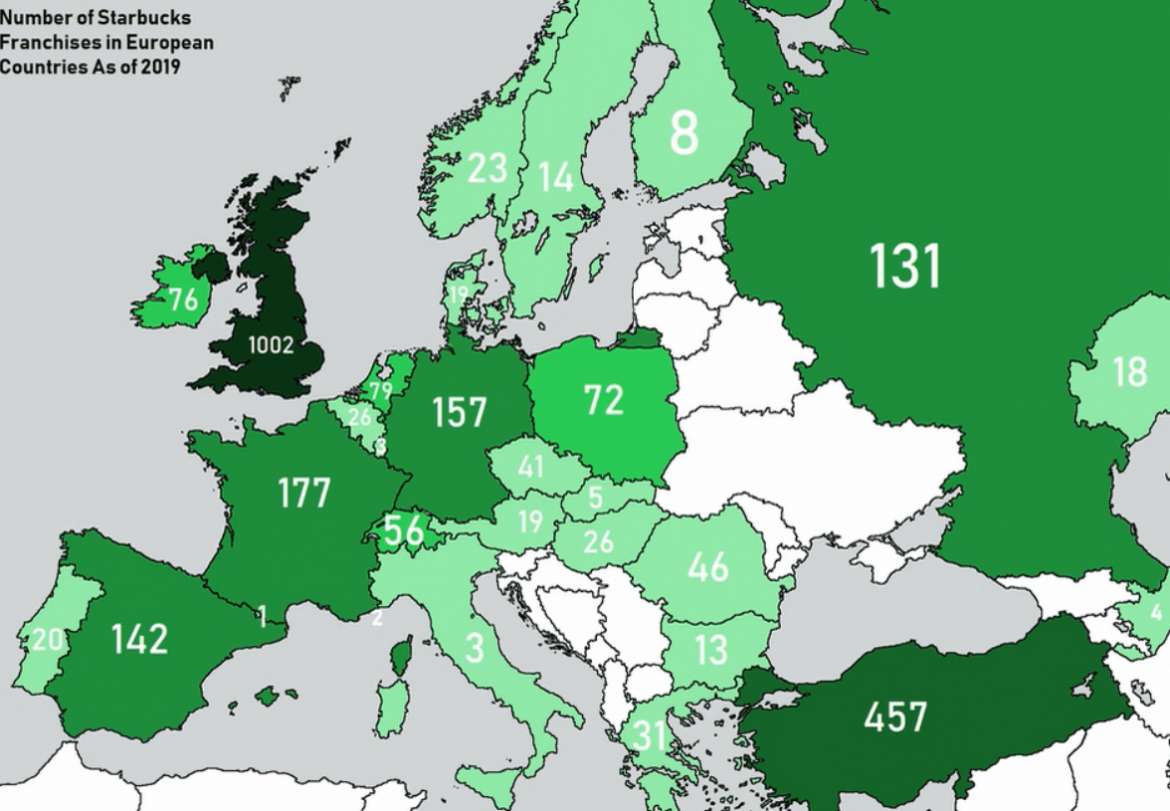
A country which can call itself the Non-Starbucks capital of the EU, the largest country in the EU (and let's not forget those 20 million tourists looking for a fix) with no Starbucks at all. One of the main reasons for that is the coffee - and coffee culture - is so strong.
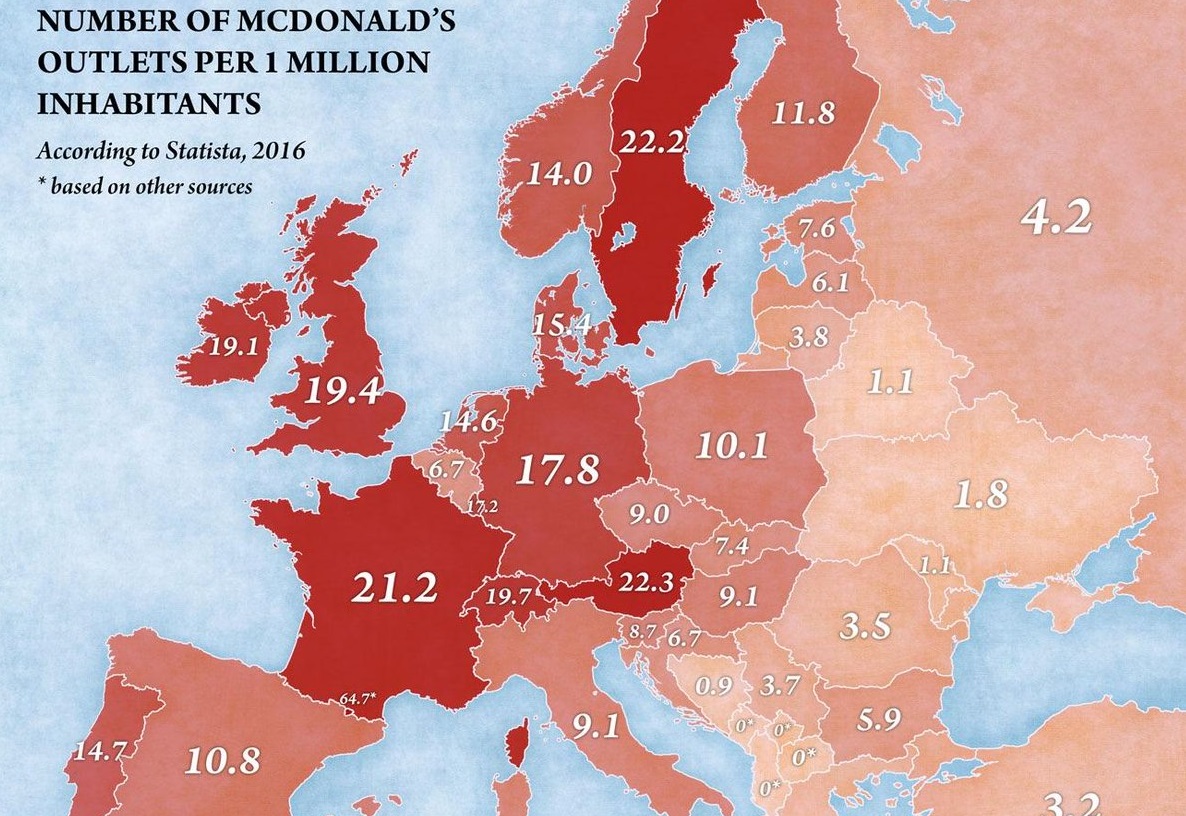
The lowest per capita density of McDonalds in the EU outside the Baltic States. The KFC situation looked encouraging - just 7 outlets compared to 224 in Poland for example.
A great niche for Croatia to develop, perhaps?
Tourists want something unique, something different
Something different like the London Eye, for example, which was a real hit and attraction when it opened. Something truly unique. And then not so unique, as Eyes started to appear in cities as far away as Shanghai, Melbourne and Singapore.
But it is the truly unique attractions which make us travel. And the very ironic thing is that those very unique things are VERY affordable and cost almost nothing. Imagine going to Paris without visiting two of its stars, the Eiffel Tower and the Louvre - combined entrance price just 20 euro. The Taj Mahal (1 euro), the Pyramids (6 euro) the Great Wall of China (7 euro), the Hermitage in St Petersburg (8 euro), the Statue of Liberty (17 euro), Edinburgh Castle (20 euro), Macchu Picchu (39 euro). Lanksy took us through 15 world-class and very unique attractions, of which Petra in Jordan was the most expensive at 60 euro - total entrance price just 290 euro all in. In his example, a tourist coming from Vancouver to Paris to see the Louvre was spending just 0.3% of the holiday budget on the thing he came to see.
All the money is made elsewhere.
Protect and develop the unique and fabulous attractions, and they will come. And word of mouth will spread about a destination with something different and well-managed, and non-sponsored social media will market that message even louder.
Unique attractions do not need to be old monuments or places of natural beauty. He cited the food court in Brooklyn, where members had to adhere to one important rule - they could not have a similar restaurant anywhere else. If they did, they were out. And so every single restaurant is a unique gourmet experience. Plane tickets for foodies.
From the ice hotel in Sweden to the competition in Scandinavia and Finland for the best offering to enjoy the Northern Lights, to random unique hits such as a restaurant with goats on the roof, it is the unique experience which is what people are searching for.
The key of course is how to manage it well.
But we are many, and will be more. Time to put a cap on CAPitalism?
But there are more and more tourists, how to stop them coming en masse? One of the things I loved about Lansky's presentation was that he presented it in such a way as you felt that everything was so obvious and that you almost came up with the idea yourself. Simple steps, sensible suggestions, eloquently delivered. Many eyes opened.
The best example of tourism development is a theme park. If the management decides to add another ride, they also add supporting facilities - another restaurant, a ticket booth, extra toilets. The theme park growth is coordinated and takes in all considerations, and so bottlenecks are avoided. Not so with tourism.
Everyone wants to squeeze into the old town of Dubrovnik, for example, but are there enough parking spaces? Toilets? And this is before we think about the cruise ships...
There are natural caps in many, many tourism-related sectors, where only a finite number of people can come. Simple examples include airplanes and hotels. But it is rare to find destinations that put a cap on tourist numbers, as that would be anti-capitalist, right? Missing out on the chance to make more money. That money-grabbing approach highlights one of the stress lines of tourism today - the alienation of the local community. Yes, we want more tourism, said Lansky, but how many in the room wanted ten buses a day parked on the street with engines running to keep the aircon going, while tourists took over the streets, cafes and peed in the bushes. Day after day after day?
But with so many people coming, how do you reduce the numbers and reduce those queues. Can you actually put a cap on tourism numbers? Some destinations are. One Italian coastal destination Lansky mentioned was overrun by tourism and the 2.5 million visitors. They shifted to a ticketing entrance system with a maximum of 1.5 million tourists. A million less tourists, a much better destination and happier locals.
I wrote something similar a few months ago about how to deal with overtourism in Dubrovnik. With so many tour buses clogging up the roads, their guests spending little to nothing on arrival, and with the wonders of modern technology, I suggested an application which controlled access to the prime attraction, the old town. If you are spending a night in Dubrovnik, you get the download code. If you, the download costs you 100 euro, which you can spend anywhere in the old town (restaurants, entrance to the walls etc). It might not be popular for those looking for a cheap walk around, but Dubrovnik has to put a cap on things somehow, as it is really not a nice experience visiting in the summer these days. You can read more of the concept here.
Looking for a tourist attraction which manages demand very well? The Harry Potter Experience in London. Massively in demand, but only available when your selected visiting time comes around. Simple. Not only no queues, but a chance for advance spending when you book other services online.
How to make guests spend more?
I really enjoyed this section, as Lansky came out with a trove of data and ideas. And most of the conclusions were simple enough that I could make them.
People like to shop, especially if you can divorce the cash from the experience. Put it on the room bill, advance shopping, casino chips, that kind of thing. More than 30% of shopping is done after 6pm apparently, so stay open!
Toilets! Lack of good toilets often sends tourists back to the hotel to use the facilities in the hotel room. And then one of the kids lies on the bed, Dad checks his email, and before you know it, destination spending opportunities are lost.
One company which understands this is 2theloo, a high-street retail services company which keeps those spenders out in town. Check out the video above - genius.
Innovative tourism to create something from nothing
Customer service is everything. Do it well and that will often be the highlight of the holiday. Do it exceptionally and innovatively, and you can transform your business. Lansky gave a great example of a hotel which was number 62 in the destination's TripAdvisor ranking. They decided to convert 4 ground-floor rooms to be pet-friendly. In order to add a little friendliness, they had a gimmick of email the pet to say that its bowl and cushions were ready, ending with a greeting like Wuff, Wuff. To the hotel's astonishment, the arriving canine guests emailed their own wuffing messages back. To such an extent that all were great friends by the time of arrival. The hotel is now completely pet-friendly in all rooms. And number one on TripAdvisor.
Another brilliant idea which cost nothing was the Overstay Hotel. Guests can stay as look as the room is not booked, so if you come for a night and there is no booking for the rest of the week, you get a free stay. While this does not actually cost the hotel very much, in addition to the marketing benefit, guests are likely to spend on ancillary services such as bar and restaurant, much more than an empty room could.
Not all the money stays in the destination
An obvious point, perhaps, but one which is often overlooked. 15% to Booking.com, 10% franchise fee to corporate head office, 4% for credit cards etc - and so much more, but Lansky also gave a great example of how tourism money seemingly comes into a community, when it actually doesn't. And he gave a great example, again.
A guy comes to a hotel and pays for the room in cash. 100 euro. The owner is grateful as he is broke and immediately gives the 100 euro to the laundry guy who has been doing the service on credit. The credit guy goes to pay his vetinary bill, and the vet then settles his outstanding bar bill. The barman pays the debt to the accountant, who immediately runs to the hotel to settle last night's hotel bill when his parents came to stay. Just as he does so, the original guests comes down and says he has changed his mind and so takes his money back and leaves.
The other money aspect which is rarely mentioned (and I have NEVER heard it mentioned in Croatia) is the cost of tourism. 20 million tourists generate 12 billion dollars or whatever the number will be this year, but has anyone ever heard a number on the utility or cleanup costs on the explosion of mass tourism. Or the environmental coast of the gradual erosion of the idyll that was the Adriatic coast 50 years ago?
So what are Croatia's top 10 unique things to see that might get people on that plane?
To conclude - as I have gone on longer than I intended - close your eyes, strip away the tourists and the mass tourists. What are the top 10 things in Croatia with that unique WOW factor or the potential WOW factor? Something that you can not or can hardly find anywhere else?
My list I am sure will be different to yours, so post yours in the comments - it could be a fun discussion. But one thing that immediately strikes me about my list is that almost all - if not all - of the 10 are either threatened by overtourism, or are hardly touched by tourism at all. The lesson being, if young Lansky is right, that Croatia and his Starbucks-free brand might be better served to have a complete rethink of how to make those unique attractions which cost almost nothing to see so amazing that all the money is spent around them.
And to consider, perhaps, that 1000 tourists a day spending 1000 euro a day is a lot better than 100,000 spending 10 euro a day...
My top 10, in no particular order
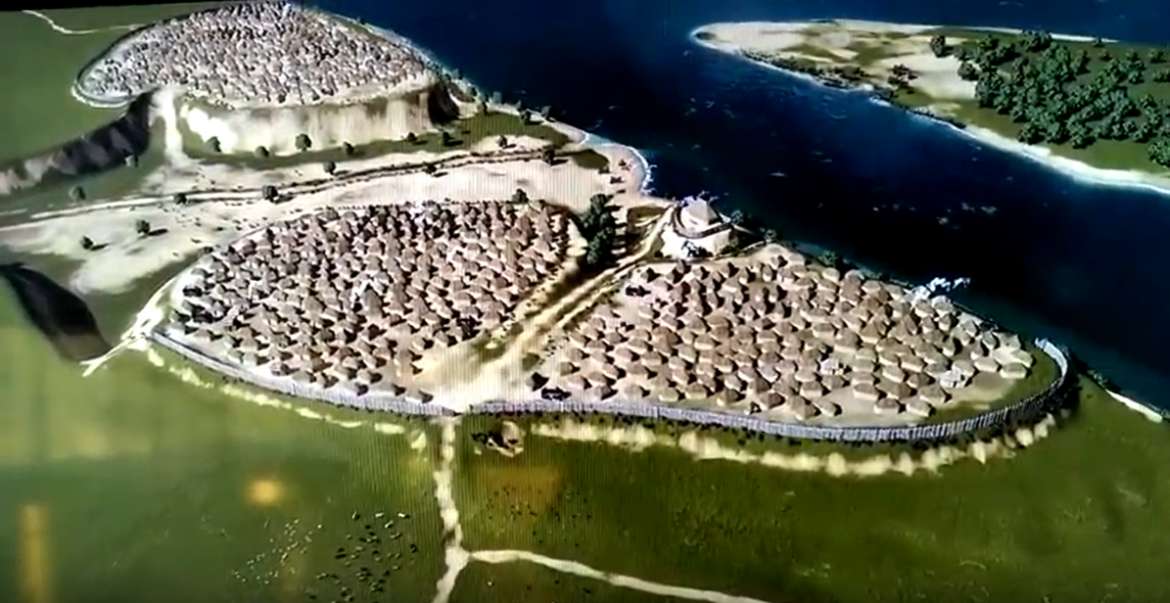
1. Dubrovnik Walls
2. Diocletian's Palace
3. Plitvice Lakes
4. Vucedol (in photo above - and an intro for those who have never heard of it)
5. Blaca and Dragon's Cave
6. Blue Cave
7. Smiljan, birthplace of Nikola Tesla (but needs to be developed - but what an opportunity with 21 million electric cars on Europe's roads by 2030)
8. Pula Arena
9. Sibenik stone fortresses and cathedral
10. Hvar Town and the Pakleni Islands
Imagine if all those where developed with the idea of preserving and keeping special the unique attractions, and then generating the cash all around.
To learn more about Doug Lansky and successful tourism, visit his official website.
For more on tourism in Croatia, follow the dedicated TCN travel section.
Dubrovnik Considering Ban on New Restaurants for Five Years
November 9, 2019 - A new measure could see Dubrovnik ban all new restaurants in the Old Town for five years.
“It has so far fought overtourism by limiting the number of cruise ships that dock in its ports, banning four in five souvenir stalls, and cutting the number of tables and chairs outside restaurants by 20%. And now the Croatian port of Dubrovnik has suggested an even more stringent measure: an effective ban of all new restaurants,” wrote CNN on November 5th about the potential of a five-year ban for new restaurants in the city. The Dubrovnik Council will vote on the proposal next month.
Mayor of Dubrovnik, Mato Frankovic, told CNN that, “anyone wanting to open a restaurant in the Old Town cannot put down new tables and chairs for the next five years. They can open inside, but knowing the Old City, it's very hard to find a place where you can work inside. Ninety nine percent of restaurants work mainly with outside tables."
Frankovic added that if a restaurant chose to close down, it would remain ‘fully closed’, meaning no new business could enter.
Since the city council owns all the public space in Dubrovnik, they get to decide whether or not a restaurant can be allocated space outside for tables, CNN explained.
Slobodna Dalmacija reported that Dubrovnik caterers do not mind the five-year embargo announced by the mayor of Dubrovnik.
For starters, there are already too many restaurants in Dubrovnik’s historic center - and as many as 150 different types, from snack bars to taverns. The locals say they must protect themselves from the competition coming from the outside:
“We agreed that a five-year moratorium would be a good idea because it makes it easier for everyone to do business and plan. Under such a condition, we would have a normal business environment, so this arrangement seems very good to me.
There is also one problem, and I do not know how it will be solved. For example, if one outlet closes in those five years, another outlet cannot be opened in its place, and that public space ceases to exist,” notes Ante Vlasic, head of the Dubrovnik Caterers Association.
Vlasic highlights another drawback:
“We don't even know what will happen if, for example, the owners of a restaurant change and everything else remains the same. But, in principle, the idea is good, it would provide us with better and easier work,” added Vlasic. The proposal stems from the cooperation between the City and the caterers according to the famous "5x5x5" model, which goes into effect from January 1, 2020.
Mayor Frankovic offered restaurateurs a lease extension on urban spaces and the lease of public spaces to five years, with a five-year moratorium on changes in public spaces and the number of tables.
“All those who have leased space owned by the City of Dubrovnik know that after the contract expires, we are obliged to call for tenders, place the premises on the market, and get new tenants according to the criterion of the best offer. The law did not envisage the possibility of offering a good tenant lease priority.
We thought for a long time how to protect existing caterers, hired legal experts, and came up with this solution. For all those who lease space in our property, the lease will be extended to five years, which is the maximum legal deadline. Any price adjustments are minimal,” the mayor explained.
“The second amendment relates to the lease of public lands, which has been ongoing year after year, and the new proposal is to conclude public lease agreements for the first time for five years, which is the legal maximum. This applies to caterers both in the city and in private areas. It means five years for everyone, and the price remains the same.
We want to guarantee everyone more business security. Now you know that you will have contracts for five years and you will not be too concerned with who is in power,” said Frankovic.
Finally, Frankovic explained the last "5" of this model, which refers to the moratorium on leasing new public spaces.
“When we sign new contracts on January 1, 2020, there will be no lease of new public spaces for the next five years. There will not be one more table or surface. That's it. I think this is correct and fair and limits the enormous boom of restaurants inside the historic core that we no longer really need. Catering facilities can still open, but in private facilities and outside a public area,” concluded Frankovic.
Caterers have agreed to the embargo proposal, but are somewhat less satisfied with reducing the number of tables and chairs in public spaces.
Namely, the tables and chairs of hospitality facilities within the historic core extend over 3795 square meters of public space. On the first day of 2020, the coverage will be reduced by about three hundred square meters, as all catering establishments that have leased more than 25 square meters of public space so far will be reduced by ten percent. That provision hits as many as 56 catering establishments.
The restaurant "Dalmatino" has so far occupied 29.5 square meters of space. Owner Robert Jasprica thinks the decision to cut this by 10 percent is not a good one.
“What matters is how the number of tables will be cut. If it's going to be linear, as I've heard, I'm not losing those three, four chairs, but actually more. There will be ten centimeters between these tables, who will want to sit there?” says Jasprica, one of the few caterers who keeps his restaurant open in the winter.
“It’ll cut ten percent of the tables now, which is ten percent less public space, ten percent less traffic. This reduction is crucial to me for 12 full-time employees and for working in the winter. It is easier for me to close the facility on November 1st,” says Jasprica.
Recall, in the flight against ovetourism, Dubrovnik mayor Mato Frankovic also announced last year that no more than two cruise ships per day could dock in the city, which has a 70% success rate for 2019.
Frankovic also shut down 80% of souvenir stands and 20% of outdoor seating. This other 10% will be cut from January 1, 2020, CNN concluded.
To read more about travel in Croatia, follow TCN’s dedicated page.
Number of Tables and Chairs in Dubrovnik Old Town to be Reduced by 10%
November 4, 2019 - The historic core of Dubrovnik will see fewer tables and chairs next year.
HRTurizam reports that a public consultation is underway in the City of Dubrovnik regarding the Draft Decision on Amending the Decision on the Lease of Public Areas for 2020.
What is most significant is the proposal to reduce the public space available by 10% for tables and chairs at all catering facilities who use 25.00 m2 or more. Also, the lease time of the public space has increased from 3 to 5 years, which will certainly bring some security to the caterers.
The moratorium on setting up new tables and chairs continues for both existing and new catering establishments, which would open in the coming period.
Furthermore, in order to extend the tourist season, the City of Dubrovnik has proposed a measure that should stimulate owners of restaurants in the Old Town to work in the winter months.
In Article 6, a new paragraph on the rent exemption for caterers in the historic core is added if the caterers operate in the winter months.
The measure refers to a rent exemption for public caterers predominantly serving meals (restaurants, taverns, pizzerias) in the historic core, if they carry on their business from December 1, 2019, to February 29, 2020. The consultation is open until November 22, 2019.
Recall, this winter, Dubrovnik will be connected to seven world capitals (Frankfurt, London, Istanbul, Warsaw, Rome, Barcelona, and Athens), and with the Croatian capital - Zagreb.
HRTurizam reported back in September that year-round direct flights between Frankfurt and Dubrovnik, co-organized by the Dubrovnik National Tourist Board, the Croatian national carrier Croatia Airlines and the Croatian National Tourist Board, was presented in Frankfurt to fifty German travel agents and travel journalists.
At the Croatian restaurant Damiro Westsite in downtown Frankfurt, director of the Representative Office of the Croatian National Tourist Board in Frankfurt, Romeo Draghicchio, emphasized that the promotion of Dubrovnik in the winter months fits into the strategic plans of Croatian tourism, which seeks to extend the season. Dubrovnik has made the most progress in this regard, and this direct connection in the winter is ideal for attracting additional guests from Frankfurt and its surroundings in the winter.
“The Frankfurt-Dubrovnik direct winter flight will operate for the third year within the strategic projects of the Croatian National Tourist Board, the Dubrovnik Tourist Board and Croatia Airlines. At the initiative of the Tourist Board and Croatia Airlines, all open hotels participate in the winter programs," said the director of the Tourist Board, Romana Vlasic.
The Dubrovnik Tourist Board also designed and printed leaflets on all events during the winter in Croatian, English, and German, which will be available to all visitors at the Tourist Information Offices.
To read more about lifestyle in Croatia, follow TCN’s dedicated page.


